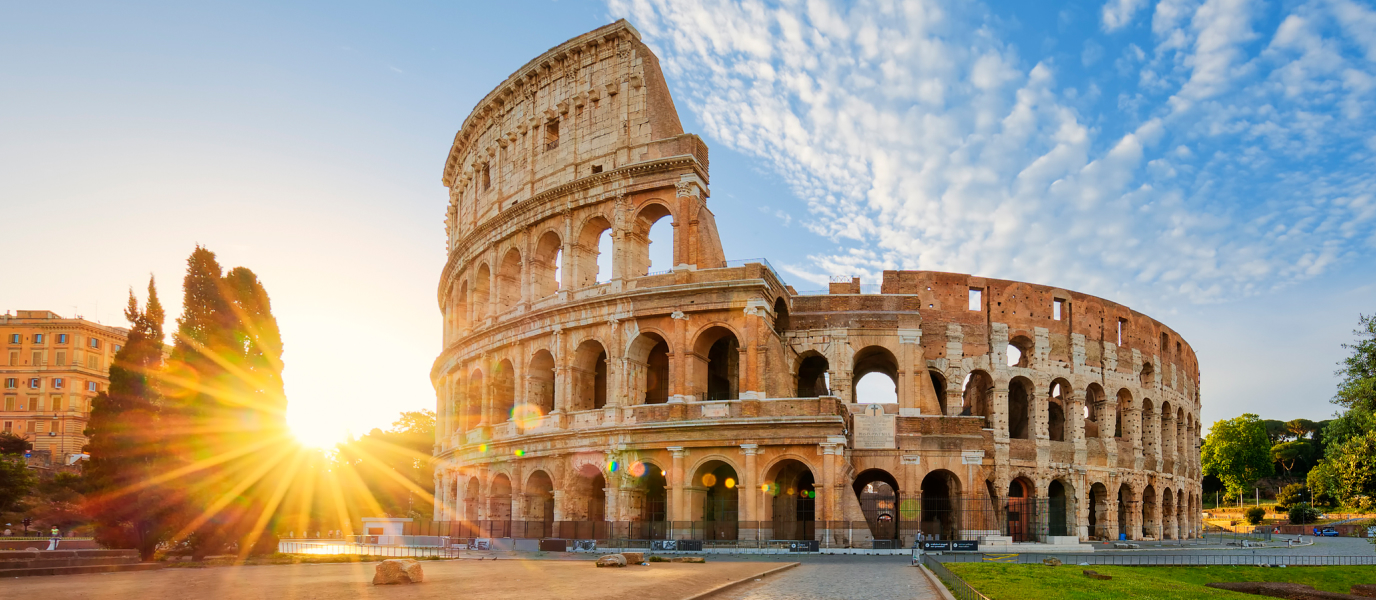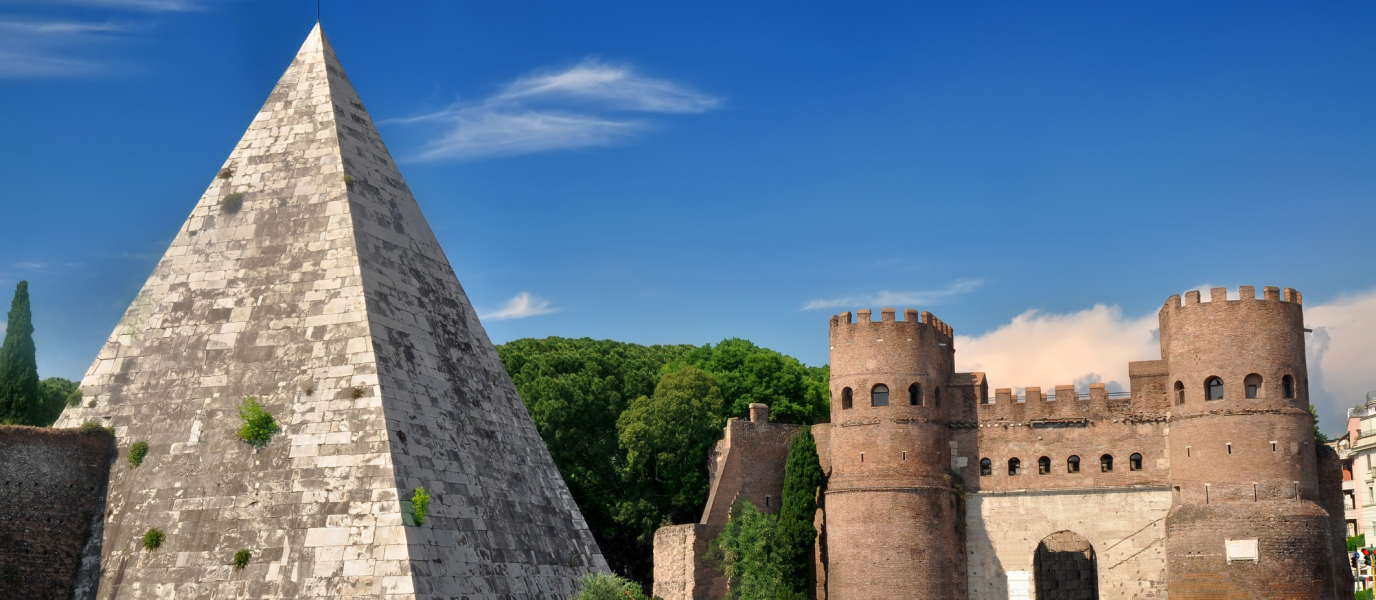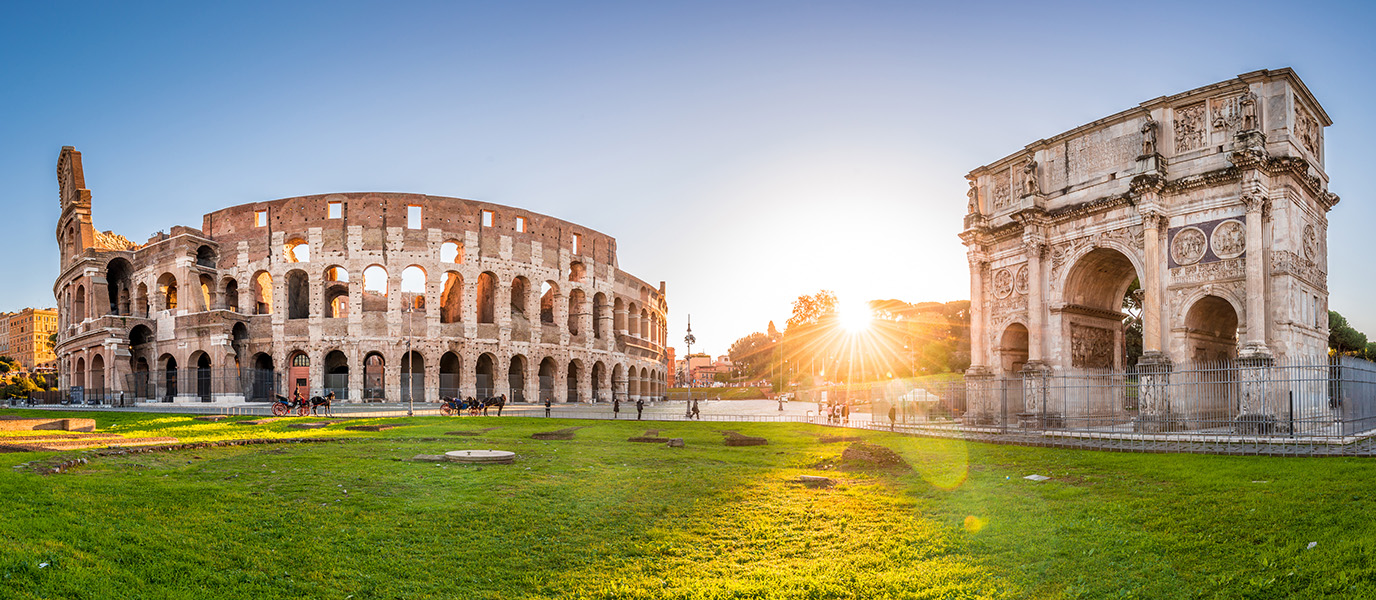Friendly, historic, fun… Rome is one of Europe’s most popular cities with tourists, both internal and from abroad. This is because it has so much to offer in terms of its historical heritage, its museums, leisure activities, and excellent cuisine. This age-old city is a wonderful place to visit — with family, with friends, or alone.
Rome has fun and interesting options for everyone. If you want to discover the essence of Rome, we will guide you through the most authentic spots of Italy’s capital, so you can explore the identity of a city with such a remarkable history.
NOT-TO-BE-MISSED PLACES IN ROME
The Roman Colosseum
The setting for gladiator contests in ancient times, the Colosseum is one of Rome’s greatest attractions. It was built by the Romans between 70 and 80 A.D., and is the oldest and largest Roman monument. This universal architectural icon was built on the orders of the Emperor Vespasian, and its innovative design has provided the inspiration for modern stadiums the world over.
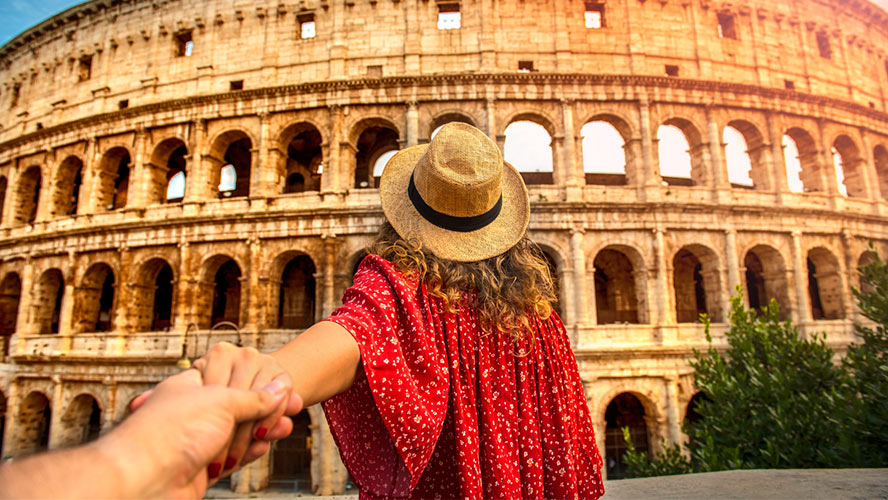
Piazza Navona
One of the city’s most important Baroque squares. It has an elliptical shape and three fountains; around it stand a number of ochre-coloured buildings. Piazza Navonna impresses visitors with its beauty and lively atmosphere.The square’s central fountain, the Fontana dei Quatro Fiumi (1648) [Fountain of the Four Rivers] was the work of none other than the brilliant Gian Lorenzo Bernini. The four sculptures represent the Nile, the Ganges, the River Plate and the Danube.
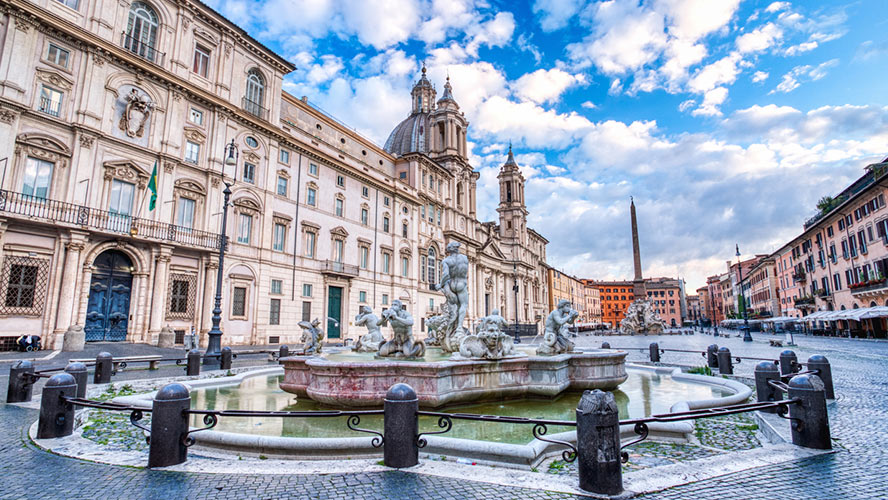
Fontana di Trevi
This, undoubtedly, is the most famous fountain in the whole of Italy. There cannot be a traveller who has visited Rome and left without seeing the Trevi Fountain and tossing a coin onto the water so that they could return to Rome. The central figure represents Neptune, and at his side are two newts: one symbolising a calm sea, and the other a stormy sea. The sculptures at the sides symbolise Health and Plenty. The fountain always has a crowd of admirers, whatever the time of day. So now you know: this is one of the first sights to see in Rome.
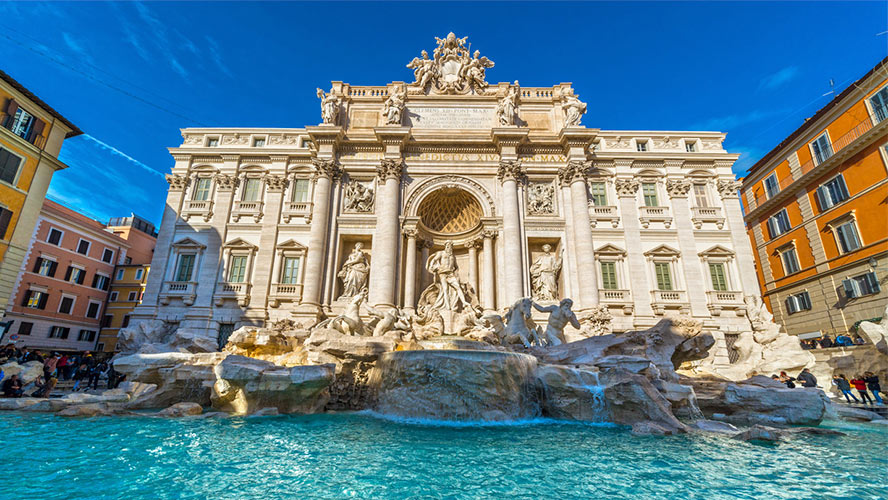
St. Peter’s Square and Basilica
The world’s smallest independent state, the Vatican, has two attractions that no one should miss on any trip to Rome. They are the magnificent Square of St Peter, where crowds gather to see the Pope, and St. Peter’s Basilica, both largely designed by Bernini. The square has a total of 284 columns and an immense Egyptian obelisk, weighing 350 tonnes, in the centre. And of course visitors to the Basilica must not fail to admire the “Pietá”, a masterpiece created by Michelangelo at the age of only 23, as well as the canopy designed by Bernini. If you have time, we can recommend the views of Rome from the cupola.
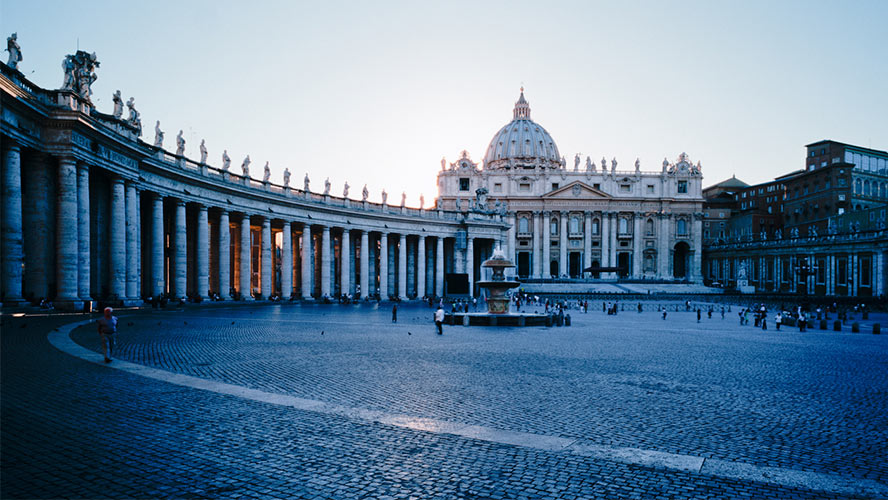
The Sistine Chapel
Every tourist who visits Rome really must see the Sistine Chapel, and be dazzled by the paintings created by the genius artist, Michelangelo. It took him four years to complete the ceiling decorations. The frescoes are divided into four huge panels representing scenes from Genesis, along with 300 individual figures of prophets, sybils, Old Testament characters, and young nudes. This extraordinary work covers a total of 1,100 m2. On the panel behind the altar, visitors can seen the outstanding ‘Final Judgment’, painted by Michelangelo 22 years after the creation of the ceiling frescoes.
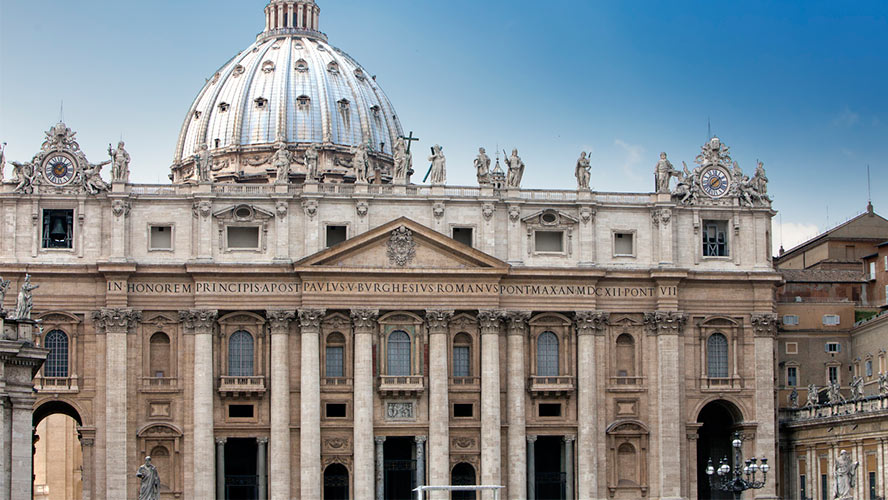
Castel Sant’Angelo
Very close to St. Peter’s Square, the magnificent silhouette of Castel Sant’Angelo rises above the bank of the river Tiber. It was designed as a mausoleum for the Emperor Hadrian in 130 A.D., and its circular shape influenced many other subsequent architectural projects. The castle continued to be used as a burial ground for emperors until it was incorporated into the city’s defensive structure in 271 A.D. For the next thousand years, it was Rome’s main fortress. Its ramparts command wonderful views of Rome’s historic quarter, making it one of the essential places to visit in the city.
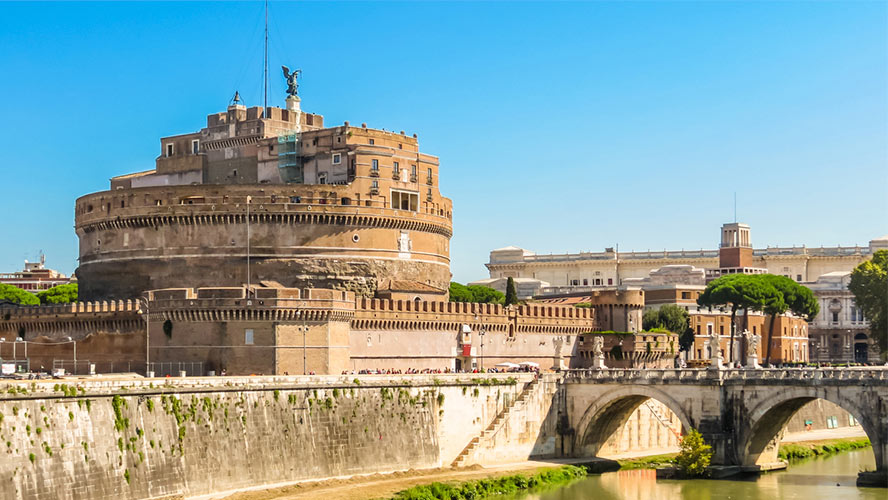
The Mouth of Truth
The Mouth of Truth, or Bocca della Verità, is a famous marble mask depicting a huge open mouth which, according to legend, bites the hand of impostors. It measures 1.75 metres in diameter, is dedicated to Neptune the god of the sea, and is said to have once been the cover of a Roman cesspit. Until 1632, it was in the Piazza della Bocca della Verità, but it was then moved to the façade of the nearby Santa Maria in Cosmedin church, where it remains to this day. It provides an emblematic photo for visitors to Rome.
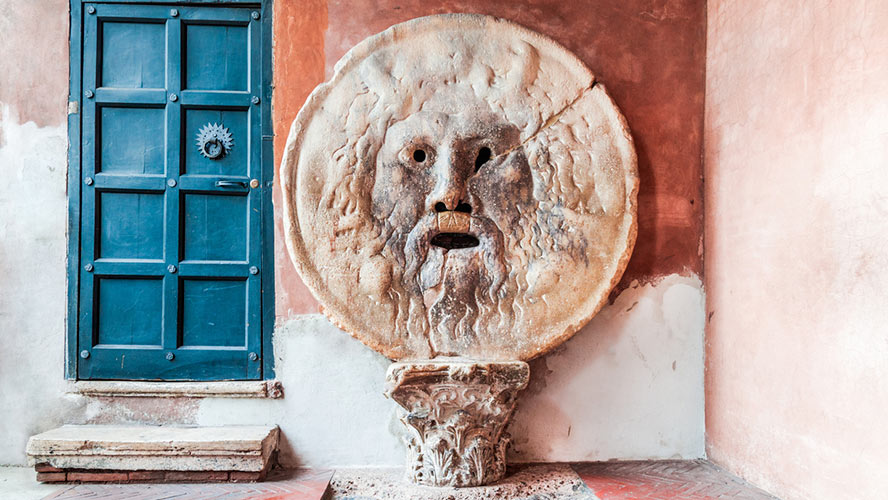
Piazza del Campidoglio
Largely designed by Michelangelo, the Piazza del Campidoglio faces St. Peter’s Basilica, and around it stand Rome’s Town Hall, the Palazzo Senatorio, and the Capitoline Museums. The square is always thronged with tourists, and one reason for this is that one of its corners is occupied by the sculpture of the Capitoline Wolf from the legend of Romulus and Remus. This is a copy, as the original sculpture is kept safely in the Capitoline Museums.
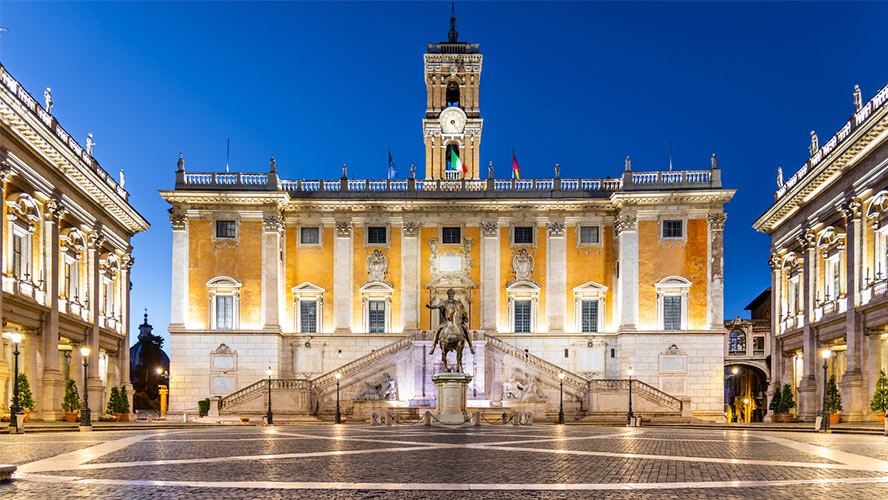
Trajan’s Market
This is one of the few parts of the Imperial Fora to have preserved some of its original grandeur. Trajan’s Market is a brick construction built between 100 and 110 A.D., and was the first ever covered ‘shopping centre’, with no fewer than 150 trading establishments. Nowadays, it uses scale models and videos to take visitors on a virtual tour of classical Rome. A tour of Trajan’s market is worth taking while in Rome.
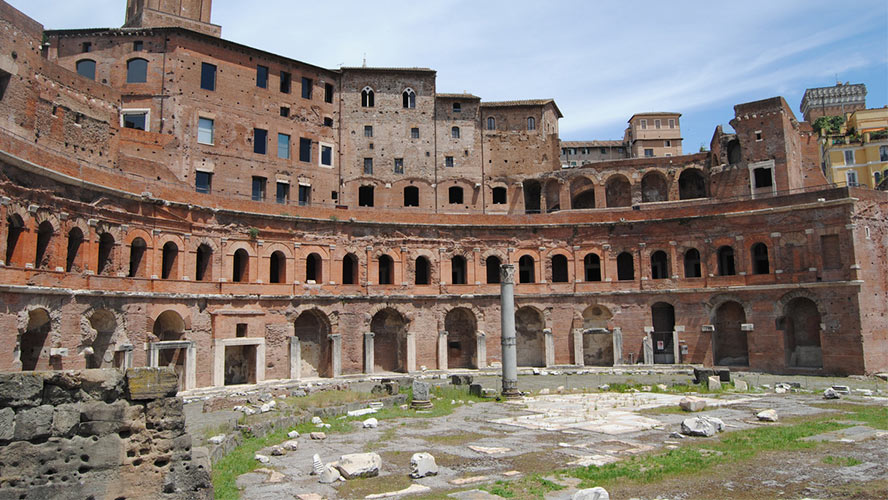
Piazza della Repubblica
With its semicircular design, the Piazza della Repubblica is one of Rome’s most attractive squares. In its centre is the nineteenth-century Fountain of the Nayades, which features four naked nymphs — something which was the subject of not a little scandal and controversy at the time. The square is surrounded by splendid buildings.
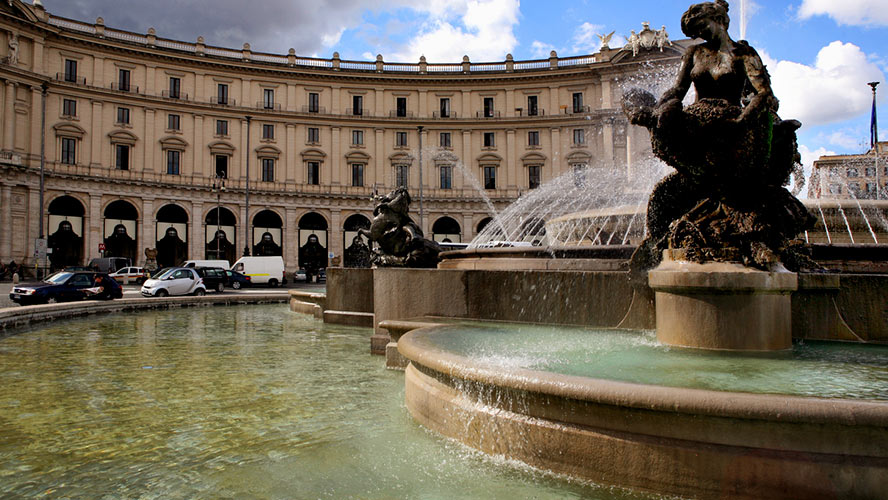
Circus Maximus
Designed for Ancient Rome’s chariot races, the Circus Maximus was a rectangular hippodrome, and could hold up to 300,000 spectators. This is another of Rome’s ‘must see’ attractions, and is situated between the Aventine and Palatine Hills. Its sand track was 600 metres long by 225 metre wide, although nowadays we can only see a small part of its remains on a vast esplanade.
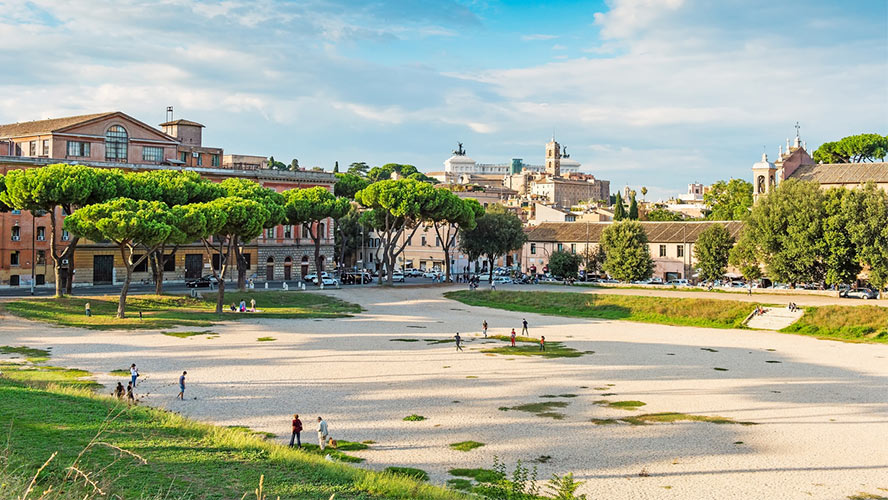
Piazza del Popolo
The Piazza del Popolo, next to the Porta Flaminia, was the entrance to the northern area of the city of Rome. Its present incarnation dates back to the sixteenth century, and in its centre stands an obelisk dedicated to Ramesses II, dates from 10 B.C. The square is watched over by three churches: Santa Maria de Popolo, Santa Maria dei Miracoli, and Santa Maria di Montesanto, the latter two being almost twins. The Piazza del Popolo is overlooked by the Pincio Gardens, which have a lovely viewing point offering views of the square.
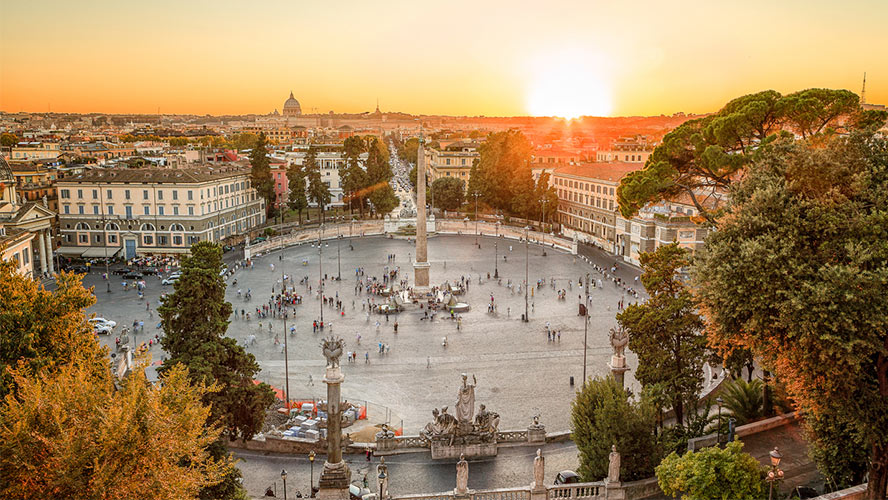
Monument to Victor Emmanuel II
This immense monument, dedicated to the first king of Italy, Victor Emmanuel II, stands in the Piazza Venezia. This marble monument, built between 1885 and 1911, commemorates the unification of Italy. It is also known as the Altare della Patria [altar of the homeland], as it also contains the tomb of the Unknown Soldier. Its neighbour, the Palazzo Venezia (1451), is famous for its balcony from which Mussolini rallied the masses, and for the Museo di Palazzo Veneza.
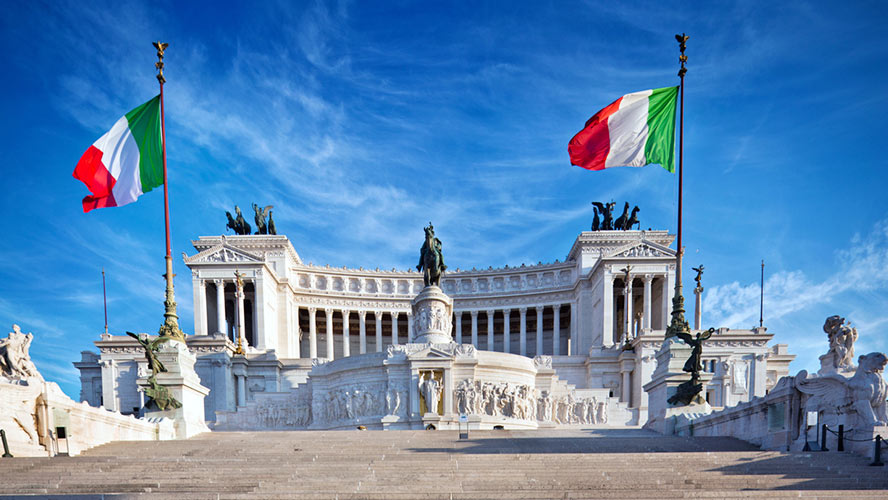
Arch of Constantine
Of all Ancient Rome’s arches, this is the most modern: it was built in the year 315 A.D. This, in part, explains the splendid state of conservation of the lavishly decorated Arch of Constantine, which impresses everyone who stops to look at it. And of course many people do, as it stands near the Colosseum and in the middle of the Via Triumphalis, and so you are bound to pass it on any visit, sightseeing or otherwise, to Rome.
Palatine Hill
According to legend, it was on this hill (one of the famous seven hills of Rome) that Romulus founded the city. Apart from that, what is clear is that the Palatine Hill is the birthplace of the city: an enclave inhabited since at least 800 B.C. It was also the place where successive Roman Emperors officially resided until the fall of the Roman Empire. Nowadays, the Palatine Hill is an open-air museum where you can learn something of the greatness of Ancient Rome.
Roman Forum
The Roman Forum is not only one of Europe’s most important archaeological complexes. It is, above all else, essential to any understanding of the origins of our civilisation, and a magnificent showcase for the evolution of architecture spanning more than ten centuries. Centuries in which the Roman Forum was the epicentre for all the political, social and economic decisions taken for a good proportion of Europe and the Mediterranean. Among the historic monuments still standing are the Arches of Titus and of Settimio Severo, the remains of the temples of Saturn, Antoninus and Faustina, the temple of Vesta, and the Basilicas of Julia, Aemilia and Maxentius. Not forgetting the Christian temple of Santa María Antiqua.
Campo de’Fiori
No square in central Rome is more authentic or more popular than Campo de’Fiori. A public space with a dual personality: during the day it is a market selling flowers, gastronomic products and souvenirs, and by night a space with lively terrace bars where you can enjoy a drink, a snack, or dinner.This square is on the site of what was, in the time of the Roman Empire, the Theatre of Pompeii. Later, during the Middle Ages, it became a wasteland where wild flowers grew. This explains the name.
Plaza de España
Thanks to the world of cinema, the famous steps in the Piazza di Spagna are the best known in Europe. They are also a favourite meeting place of the city’s inhabitants and of every visitor to Rome. But there is so much more to this square than just its famous steps. The higher area is dominated by the church of Trinità dei Monti (sixteenth century). Here too are the Fontana della Barcaccia, a work by Pietro Bernini, and the Monasdelchi palace (also known as the Palazzo di Spagna), the seat of the Spanish Embassy to the Vatican, which is considered the world’s oldest diplomatic office.
ROME’S HISTORICAL HERITAGE
Italy is the country with the greatest historical heritage in the world. That is what they say. We must not forget that it was both the centre of the Roman Empire and the heart of the Renaissance. It is therefore impossible to list all of its places of interest. Here are some of the most outstanding:
Vatican Necropolis
This necropolis dating from the second or third centuries A.D., lies about 10 metres below the present Basilica of St Peter. It was discovered by accident in 1940, and the excavations that followed led archaeologists to the discovery of over a thousand tombs. Part of the Vatican Necropolis is open to the public. It is said to contain the tomb of St Peter, so this is another essential visit while in Rome.
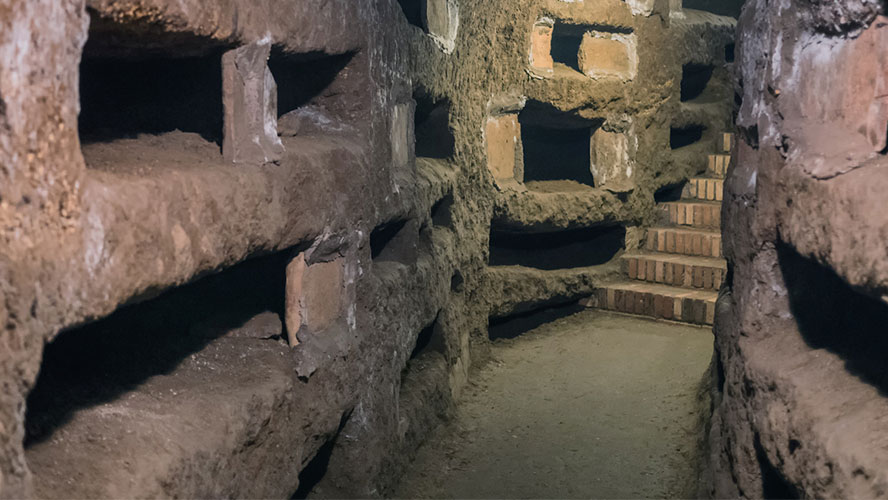
Santa Maria Maggiore
This must be the oldest and most important of the 80 churches in Rome dedicated to the Virgin Mary. The interior is sumptuously decorated, and one of its most eye-catching features is the magnificent coffered ceiling which, so it is claimed, was embellished with the very first gold brought from America — a gift to Pope Alexander VI from Spain’s Catholic Monarchs. The church of Santa Maria Maggiore dates from the fifth century A.D., and its Early Christian floor has been preserved intact.
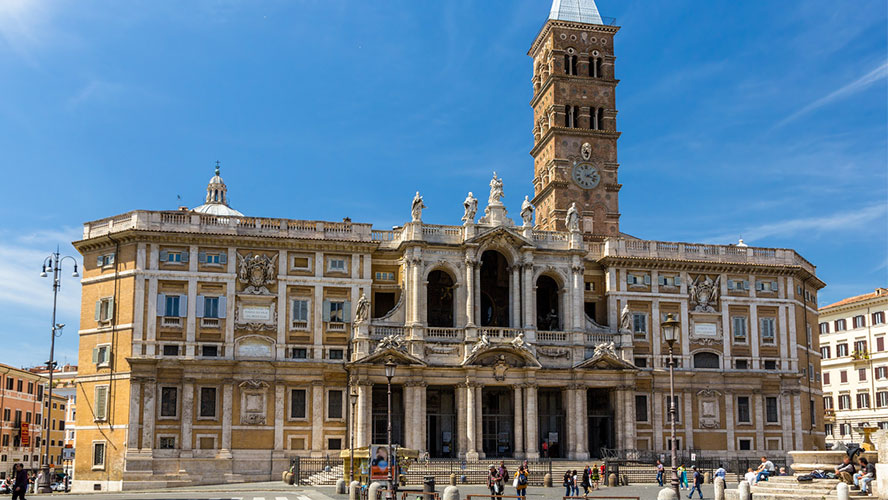
Castel Gandolfo
Twenty kilometres to the south-east of Rome, by the side of Lake Albano, stands Castel Gandolfo, the Popes’ former summer palace. It is also known as ’Vatican Number Two’, and nowadays both the palace and the gardens of its 55-hectare estate are open to the public, on the express wishes of Pope Francis. At present, a study, a library, a chapel, the Swiss Guards’ Room where the soldiers kept watch, and the bedroom where Popes Paul VI and Pius XII died can all be visited. The palace was built on the orders of Pope Urban VIII in 1626.
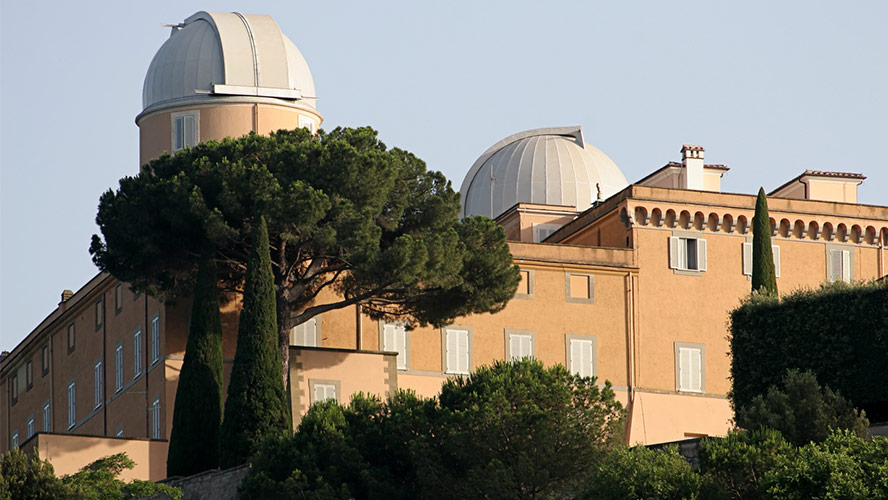
Domus Aurea
The Domus Aurea, or Golden House, was built by Nero as a space for leisure and enjoyment. It was an extravagant palace, and many of its rooms were covered in gold leaf — hence the name. The ceilings were carved in marble, and smelt of flower petals and essences. The gardens had a lake crowned with a 35-metre-tall statue of Nero, which was even taller than the Colossus of Rhodes.
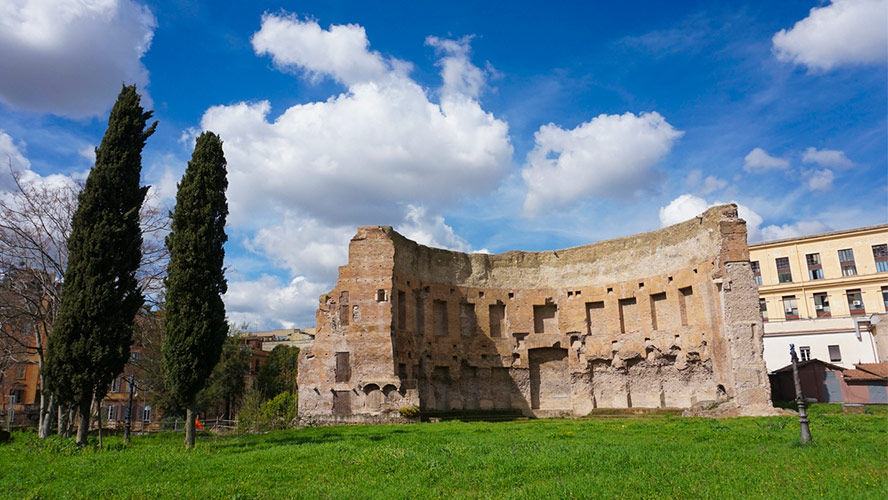
Caius Cestius Pyramid
Built in the first century B.C. as a tomb for the praetor Caius Cestius Epulo, this is one of Rome’s oldest, but lesser-known monuments. It is 36 metres tall, and stands between Porta San Paolo and the non-Catholic cemetery, in the Ostiense district. It is open to the public, but only guided tours are available. The Caius Cestius Pyramid was built to house the tomb of the judge of the same name.
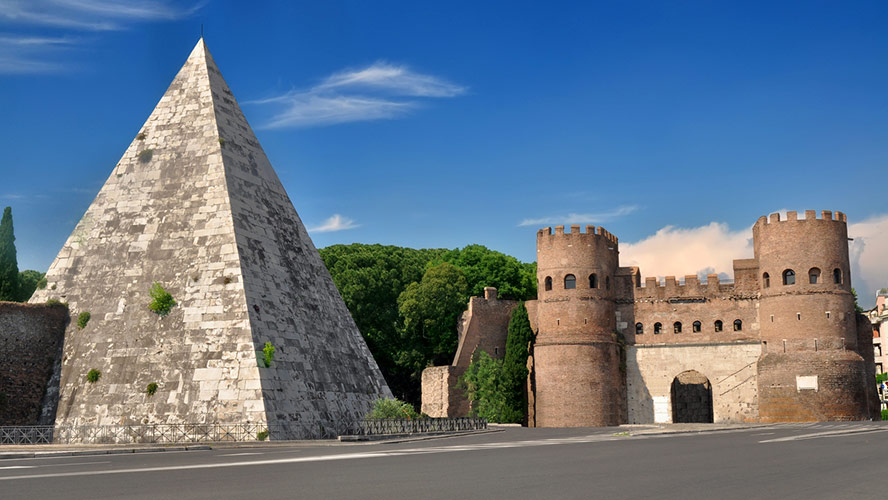
Tiber Island
Tiny, whimsical Tiber Island, on the River Tiber, is full of history. Barely 270 metres long by 67 metres wide, it is connected to land by two bridges: Ponte Fabricio, which leads to Teatro Marcelo, and Ponte Cestio, leading towards Trastevere. The island is reputed to cure infectious diseases, particularly plague, and although it is a real delight to stroll around, very few tourists visit this little scrap of land.
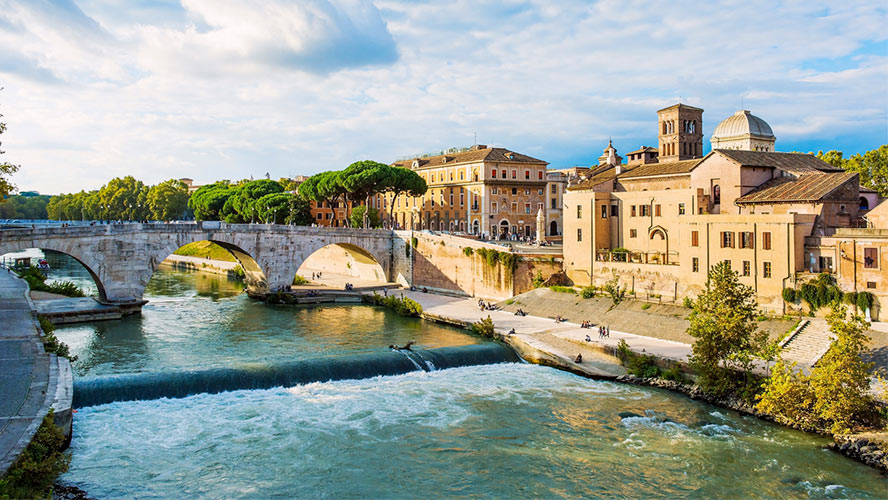
Temple of Adriano
Built in 145 A.D., close to the Pantheon, and in honour of the Emperor Hadrian, the Temple of Hadrian consists only of eleven 15-metre Corinthian columns on a raised podium. It was originally decorated with relief carvings symbolising the various provinces of the Roman Empire; these carvings are now in the Capitoline Museums. The temple is only open on very special occasions.
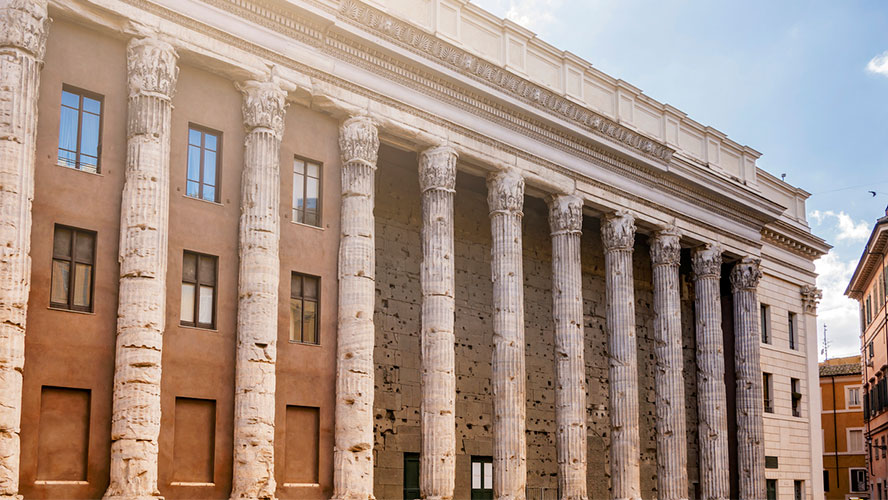
Pantheon of Agrippa
The Pantheon of Agrippa is one of Ancient Rome’s best-preserved buildings, and its impressive profile has remained intact for 2,000 years, making it one of Rome’s top tourist attractions. The most remarkable feature of its structure is the large, 9-metre hole in its roof, deliberately constructed so that the sky can be seen directly from within. The splendid interior is clad in marble, and the dome is larger than that of St. Peter’s Basilica. Here lies the tomb of the artist Raphael (1483-1520).
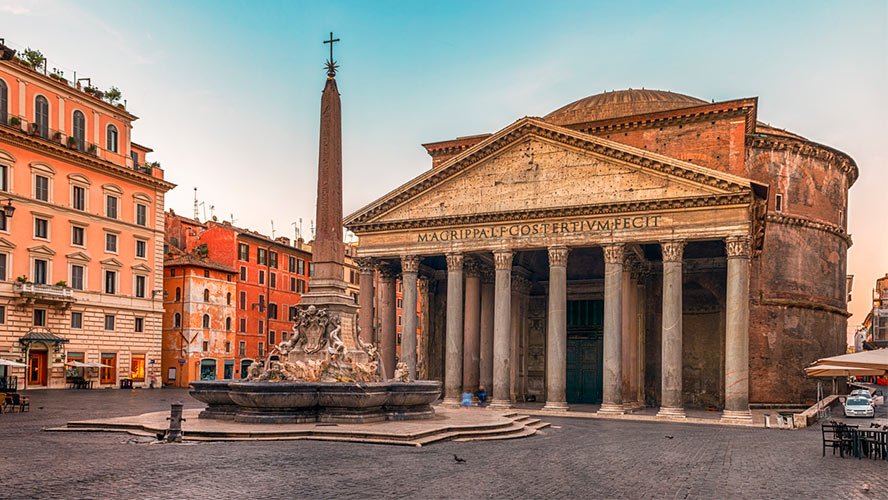
Rome’s Catacombs
Rome’s catacombs or underground cemeteries were first built in the second century A.D., and their use peaked in the fourth century. There were so many that they formed extensive networks of subterranean tunnels. Currently, there are over 60 known catacombs in Rome, but more await discovery. The most interesting catacombs are those in the Via Appia Antica (St. Callixtus, St. Sebastian and St. Domitilla), and at the far end of the city (St. Agnes and St. Priscilla).
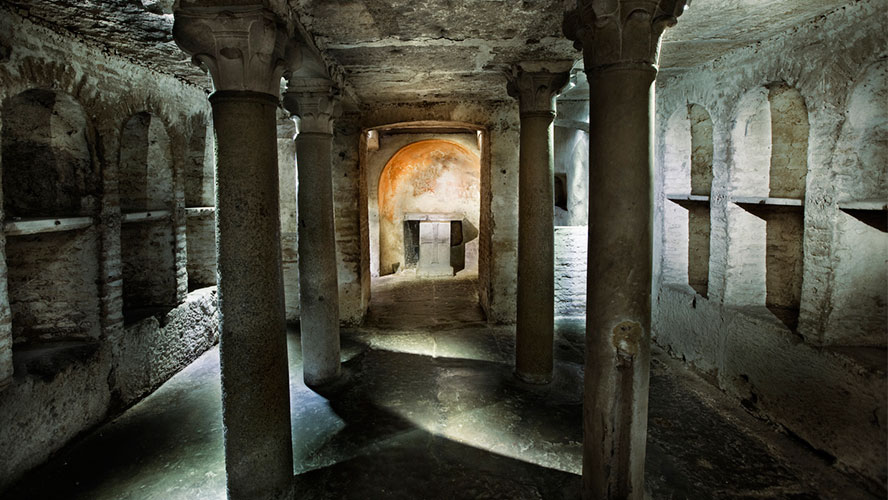
Ara Pacis
The Ara Pacis or Altar of Peace (thirteenth – ninth century B.C.) is an altar dedicated to the goddess, and was built by the Roman Senate in celebration of Augustus’ campaigns in Gaul. A few years ago, the monument was housed in a minimalist building designed by the architect Richard Meier and generated a huge controversy, making it another of the sights to see in Rome. The monument’s frieze depicts the procession that accompanied the monument on its dedication, and includes the figures of Augustus, a large number of high-ranking Roman officials and members of Augustus’ family.
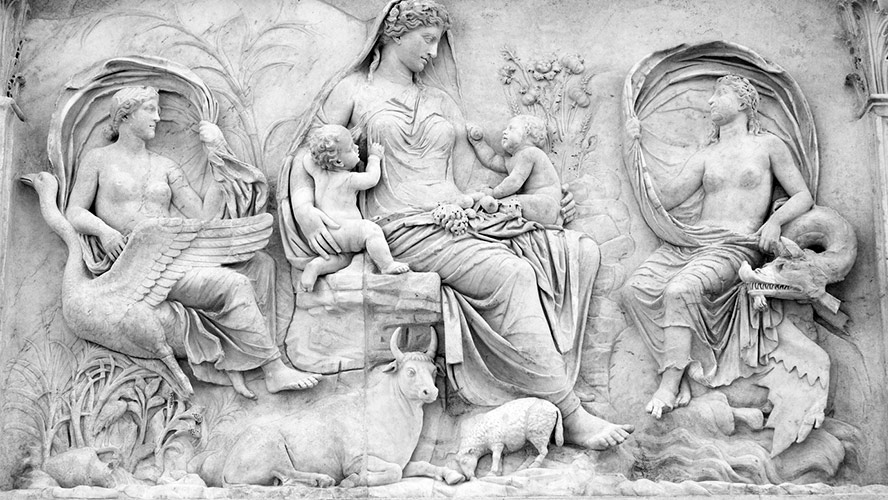
NEIGHBOURHOODS IN ROME THAT YOU MUST VISIT
Apart from its historic quarter, Rome has other interesting neighbourhoods, less frequented by tourists, that you might like to visit on your break to Italy’s capital city. Here are some of the essential ones:
Trastevere
This is one of Rome’s most colourful and charming districts. It is well worth taking a stroll through its cobbled streets with their hidden gems, such as little churches, traditional shops, and picturesque corners where you can take attractive photographs. It is the perfect spot to spend an evening having dinner in one of its many taverns. St. Callisto’s Arch is one of the area’s most memorable scenes, although the epicentre of the neighbourhood is the Piazza di Santa Maria in Trastevere.
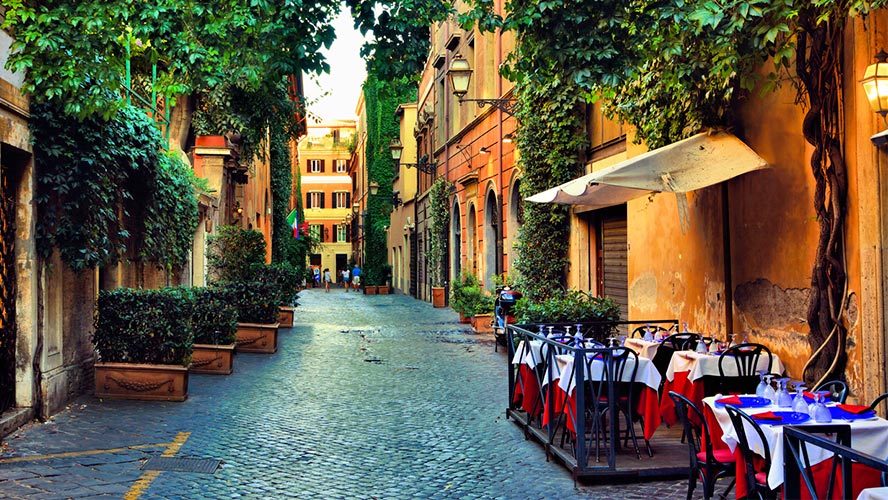
The Coppedè neighbourhood
Not quite a neighbourhood, this is a space containing 26 mansions and 17 villas built in surprising styles: a mixture of Modernist and Art Deco features, and details from Greek, Gothic, Baroque, and even medieval art. The Coppedè district, one of the more bizarre places to visit in Rome, was designed between 1913 and 1926 by the architect Gino Coppedè, after whom it is named. This collection of buildings that speak a different architectural language is clustered around Piazza Mincio.
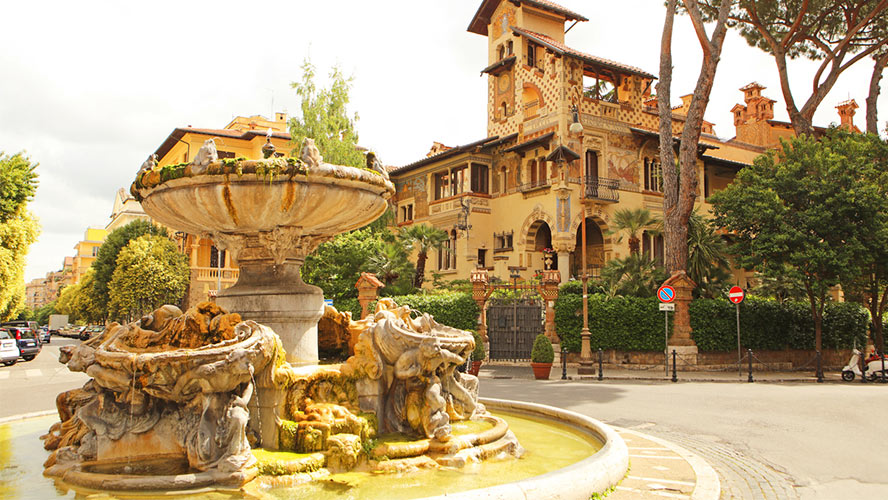
Modern Rome
Notwithstanding the Colosseum, the Vatican, the Trevi Fountain and the Pantheon, Rome is also a modern, cosmopolitan city. Consequently, the city has districts where the culture on offer is completely in tune with the twenty-first century. The Flaminio neighbourhood, in the north, has lots of trendy spots and remarkable centres such as the twenty-first century National Arts Museum, known as MAXXI, a building designed by the architect Zaha Hadid, and the Auditorio Parco della Musica, by Renzo Piano. The Quadrano district has its own museum of urban art, MURo, to which admission is free. And every corner of the Tor Marancia neighbourhood also serves as a canvas for urban art. If hipster culture interests you, one of the places you must see in Rome is Pigneto, a cinema neighbourhood packed with cafés, bars and art galleries. In Mattatoio, a converted slaughterhouse, you will find a branch of the MACRO museum. In all these places, you will find a different side of Rome — one far removed from the Rome of the tourist guidebooks.
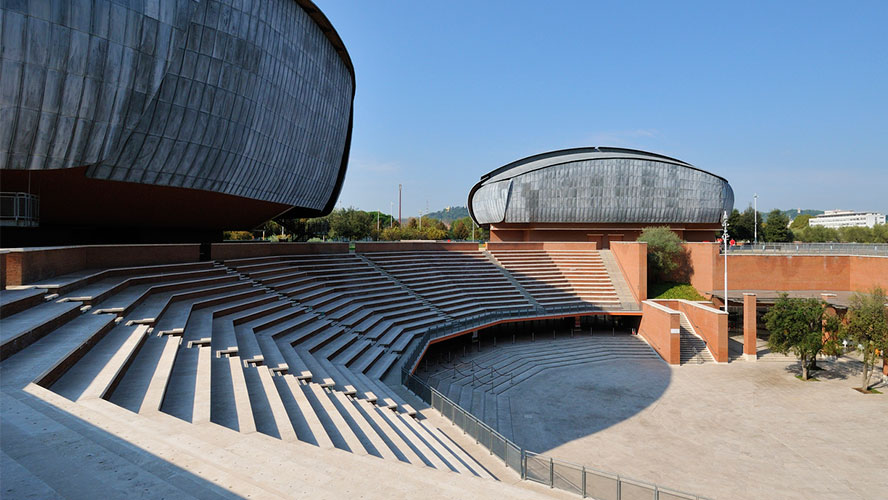
The Jewish Quarter
On the banks of the river Tiber, the area now occupied by the Jewish Ghetto (very near the Marcello Theatre, in the Sant’Angelo district) is what was once Rome’s Jewish Quarter. It developed from the sixteenth century onwards, when Pope Paul IV revoked the rights that the city’s Hebrew community had held until that time. It is worth pointing out here that the Jewish presence in the city has remained constant and uninterrupted for over 2,000 years. As well as touring the district, visitors can visit the Maggiore Temple, Rome’s synagogue.
ROME’S MUSEUMS
Capitoline Museums
The Capitoline Museums were Rome’s first civic museums. Their name is in the plural because they house different art collections distributed between the Palazzo dei Conservatori and the Palazzo Nuovo, both located in the Piazza del Campidoglio. The museums include a picture gallery; a protomoteca, or collection of sculptures of famous people; the Castellani ancient ceramics collection; and the Medagliere Capitolino, a collection of medals, coins and jewellery from the Town Hall. The museum also houses the city’s emblem: the Capitoline Wolf.
Museo Nazionale Romano
The Museo Nazionale Romano is a group of four museums located in different parts of the city, which house treasures of classical antiquity. The institution was founded in 1889 to collect together works of art from the fifth century B.C up to the third century A.D. It is a fascinating place if you want to learn about the history of Ancient Rome, and is made up of the Termas de Diocleciano, the Cripta Balbi, the Palazzo Massimo, and the Palazzo Altemps.
Galleria Borghese
The building that houses the Galleria Borghese was built on the orders of Cardinal Borghese in 1612. Three centuries later (in 1902 to be exact), the Borghese family found itself in a position where it could no longer maintain its fabulous art collection, and sold it to the state. The museum’s most famous piece is the 1805 Venus Victrix, better known as Pauline Bonaparte, but there are also masterpieces by Bernini, Titian, Raphael, Caravaggio, Rubens, Botticelli, and Canova. If you have a passion for art, this is one visit you definitely won’t want to miss.
PARKS AND GARDENS IN ROME
Giardino degli Aranci
This is a lovely place to walk and enjoy breathtaking views of Rome – from the Trastevere neighbourhood to St. Peter’s Basilica. Parco Savello, popularly known as Giardino degli Aranci (Garden of Orange Trees), is an oasis of peace and tranquillity. The garden covers 7,800 m2, and it lies within the area of the former fortress built by the Savelli family between 1285 and 1287 in the church of Santa Sabina sull’Aventino – although the present garden was created in 1932 by Raffaele de Vico. An impressive and somewhat different place to visit in Rome.
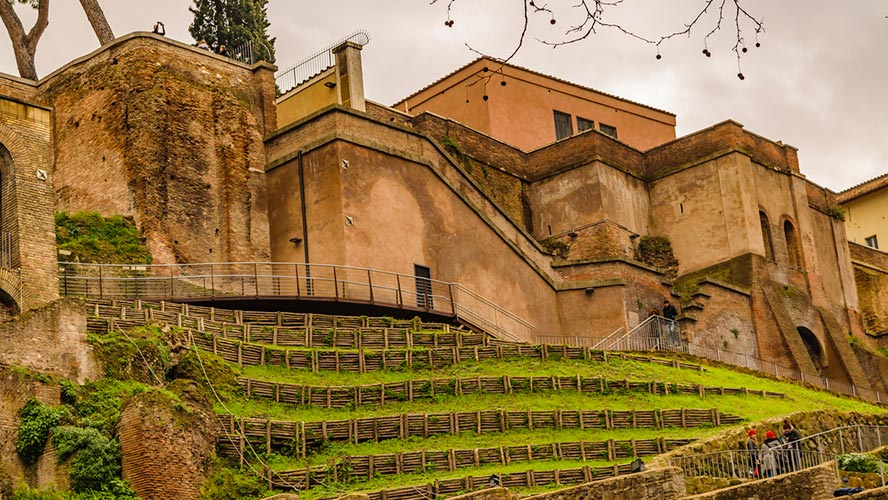
Villa d’Este
A World Heritage Site since 2001, Villa d’Este is a villa in Tivoli, on the outskirts of Rome, which is regarded as a masterpiece of Italian architecture and garden design. It was commissioned by Cardinal Ippolito d’Este (1509-1572). Nowadays, the villa is home to the Museo Didattico del Libro Antico, a museum dedicated to the study and conservation of antique and incunable books. And its incredible gardens are kept cool by 500 watering devices — fountains, waterfalls and troughs — supplied by the river Aniene and the Rivellese spring. The garden forms part of the Grandi Giardini Italiani.
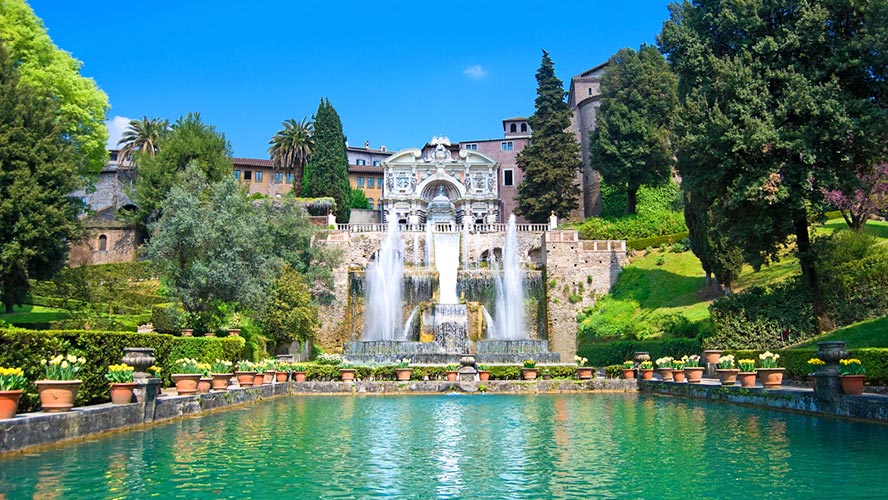
Villa Borghese
This great public park covers 80 hectares with attractive lakes, sculptures, monuments and fountains. It boasts a number of historic buildings, including the Galleria Borghese (with works by Caravaggio, Raphael and Bernini) as well as the Villa Poniatowski. The gardens of the Villa Borghese are home to Rome Zoo (Bioparco), the Giardino del Lago, the Plazoleta de Scipione Borghese Garden, the Secret Gardens, the Parco dei Daini, and the Valley of Banana Trees. Those who enjoy exercise can hire skates, boats or bicycles here.
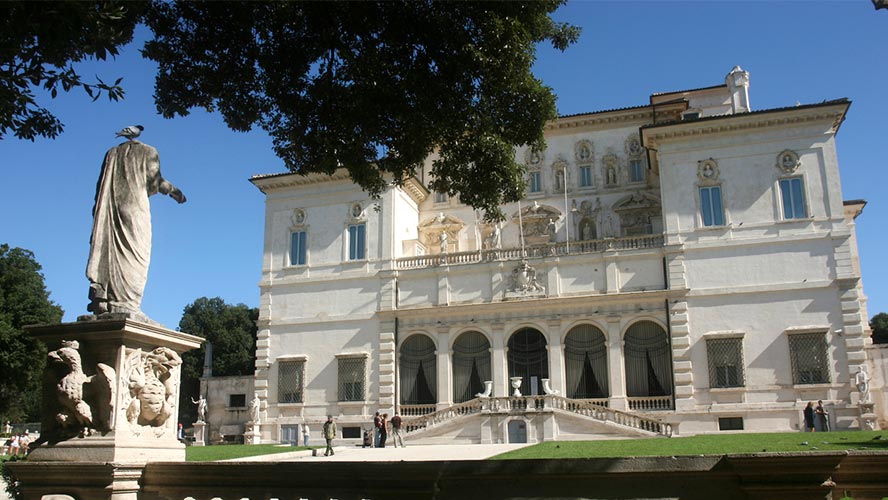
En Barceló Experiences puedes continuar tu viaje por los encantos de toda Europa visitando nuestras completas guías turísticas de otros destinos imprescindibles como Milán, Praga o Estambul.




































































